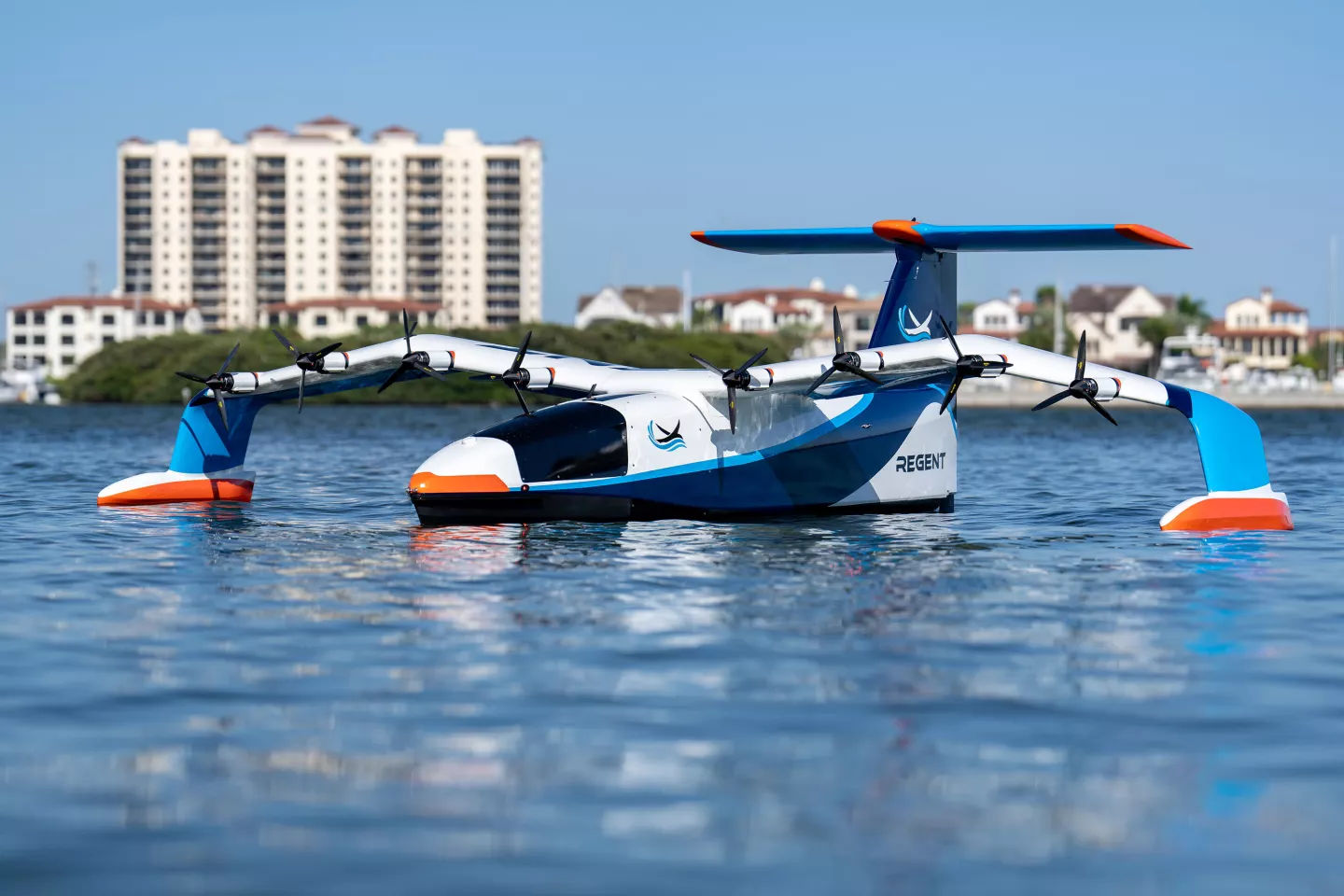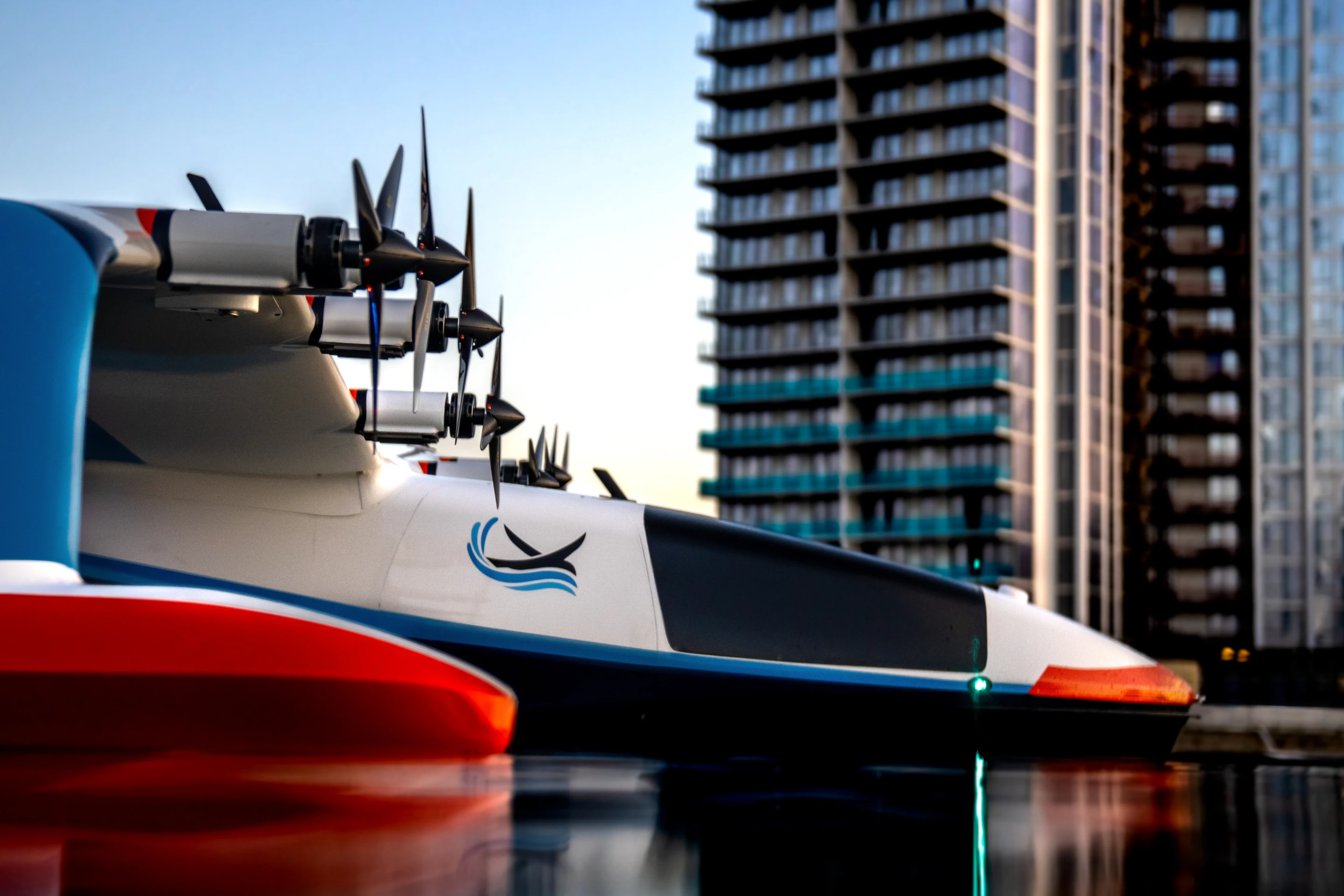If you happen to live in Rhode Island, you may get a chance later this year to witness the first manned flights of the Regent seaglider, a unique ocean-hugging electric aircraft that relies on wing-in-ground effect (also known simply as ground effect) to extend its range.
The Viceroy seaglider is a battery-powered passenger vehicle, sort of a cross between a seaplane, a low-drag hydrofoil and a WW2-era Russian ground-effect Ekranoplan. Its developer, Rhode Island-based Regent, is convinced it's a fast, green, comfortable and cost-effective way forward in transportation for coastal and island communities.
The key is efficiency; clean aircraft and marine vessels are currently severely range-restricted by the limitations of current battery technology. But a hydrofoil system can pull the seaglider up out of the water for a low-drag, high-efficiency path to takeoff, and the ground effect can radically boost range during flight.
Wing-in-ground effect occurs when something flies relatively low (within its own wingspan) to the ground and uses the resulting air buffer created between wing and ground – or, in this case, water – to generate extra lift, greatly boosting efficiency and more than doubling the range you can get from a given power source, as compared to an aircraft flying higher.
Regent founder and CEO (and MIT grad) Billy Thalheimer points to nature in explaining this phenomenon, telling The Wall Street Journal last year: "When we fly low over the surface of the water, we're flying on a cushion of air. This is what pelicans or other birds at sea [rely on]... it's aerodynamically advantageous, so that's why you get these range extensions."
Regent says its 12-passenger Viceroy seaglider will be capable of traveling up to 180 miles (290 km) on a single charge, with a top speed of 180 mph (290 km/h). The company believes it will ultimately be capable of delivering a vehicle with a 500-mile (800-km) range.
We've been keeping tabs on the progress of Regent's seaglider since at least 2021, and up until now, the only proof of concept has been a quarter-scale unmanned prototype that was big enough to carry a Jack Russell terrier, but not any paying customers, shown in flight testing below.
That's set to change this year, with Regent having won approval from the United States Coast Guard to run tests of a full-size version in the company's home turf of the Ocean State.
"This approval authorizes (Regent) to begin testing its full-scale seaglider prototype in Narragansett Bay and Rhode Island Sound," a media release explains. "Testing of the full-scale prototype with humans on board will begin later this year, with the first flight planned for early next year."
Yes, the Coast Guard, not the FAA. In a quirk of US law, although the seaglider can (or will hopefully be able to) fly, it is defined as a maritime vessel and therefore falls under the purview of the US Coast Guard, rather than the Federal Aviation Administration – which the company expects will give it a smoother, cheaper ride through the certification process.

It's not yet clear whether Regent actually has a full-scale vehicle built at this point – the company certainly has a full-size mockup, but we're yet to see a functional aircraft big enough for 12 passengers.
Although the Viceroy seaglider is a new kind of passenger vehicle, the general concept behind it has been around for a while, and a handful of vehicles in the past have relied on wing-in-ground effect – the Soviet Union's colossal (and largely impractical) Ekranoplan was one of them.
Despite such less-than-convincing past attempts to capitalize on the benefits of this phenomenon, Regent's seaglider has reportedly won serious interest from the likes of Mesa Air Group and Brittany Ferries.

The company claims it has provisional deals in place for the sale of more than 600 units, and counts Peter Thiel, Mark Cuban, Y Combinator, Lockheed Martin and Founders Fund among its investors. Relevant to the example above, Hawaiian Airlines has also expressed interest in the project, though it isn't yet backing that interest with money.
Regent, meanwhile, says it's developing a seaglider manufacturing plant in Rhode Island, and initially hopes to deliver up to 12 seagliders a year.
Source: Regent













